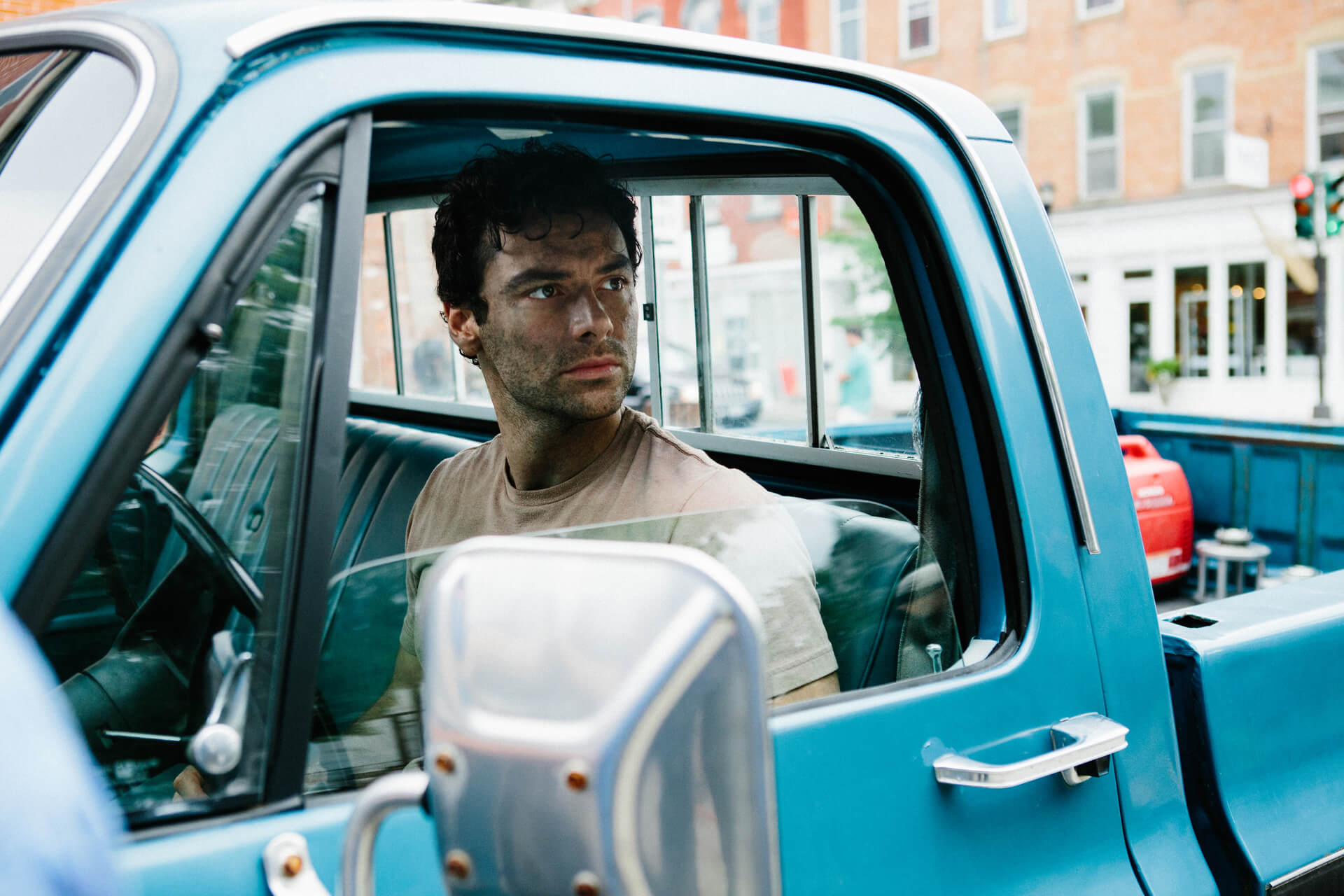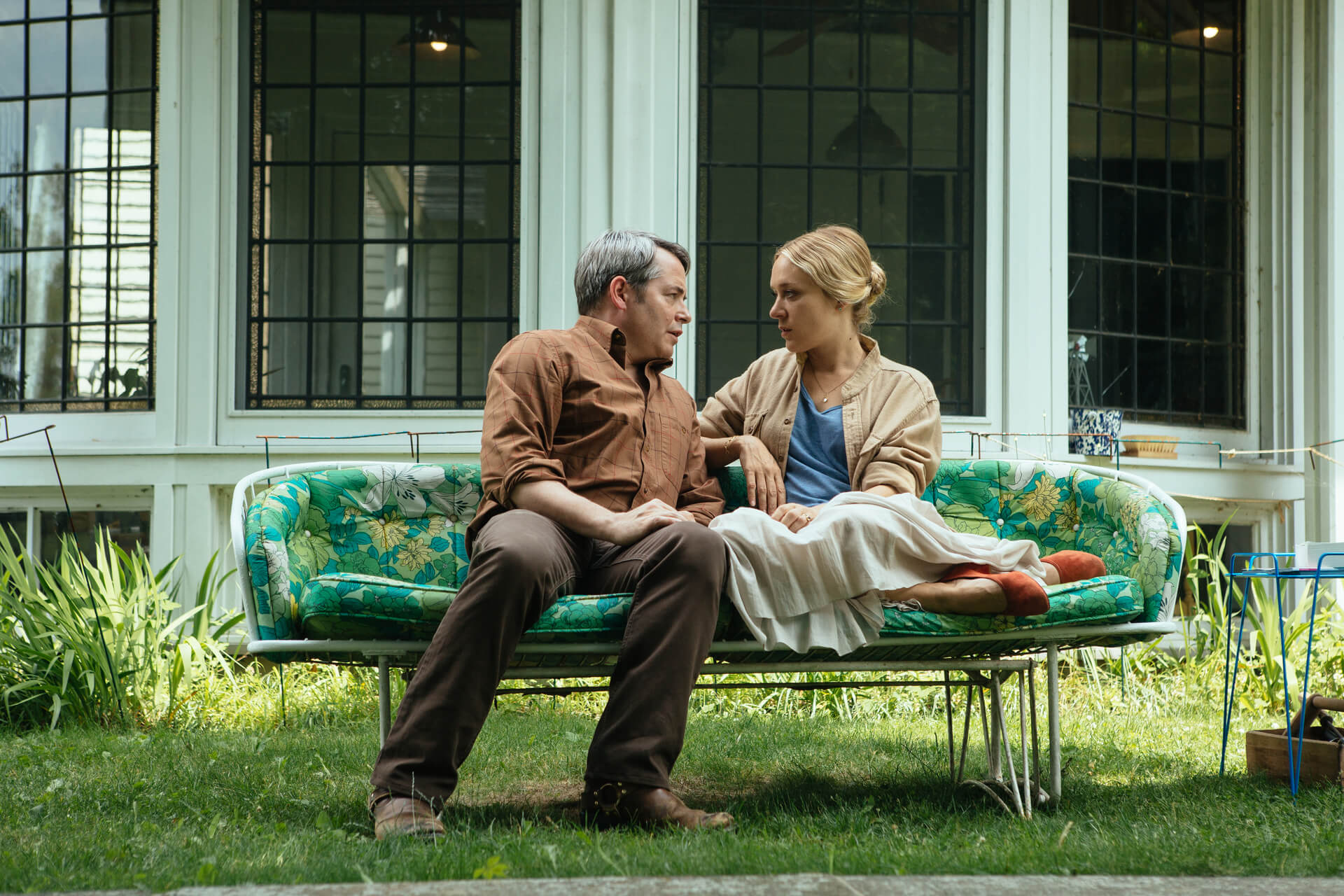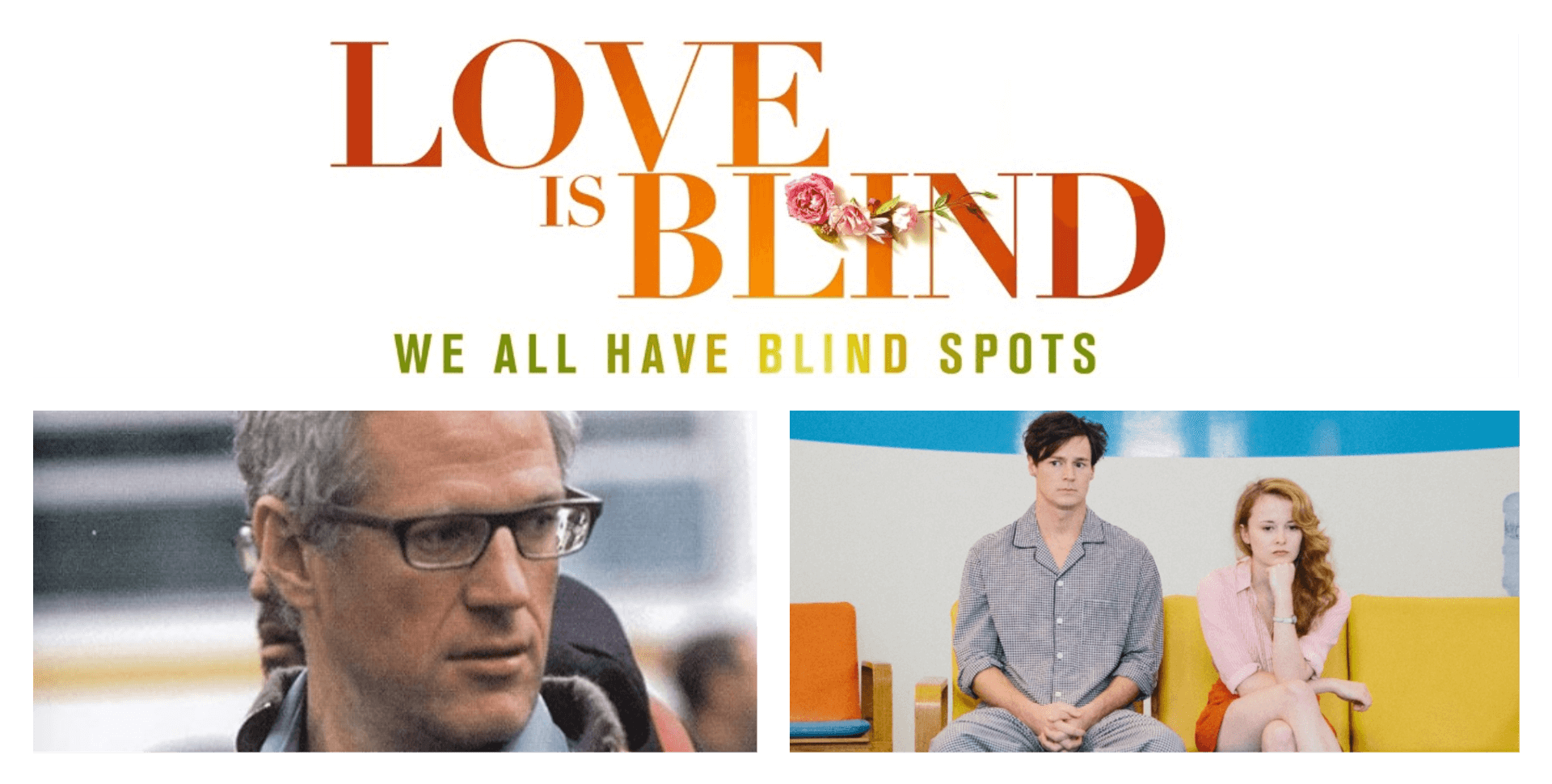Love is Blind follows Bess (Shannon Tarbet), a young woman with a major selective perception issue that prevents her from literally seeing her mother (Chloë Sevigny). To help cure her of this condition, her eccentric psychiatrist (Benjamin Walker) prescribes her an unconventional therapy method where she spends time talking to another fellow patient whom she also can't see Russell (Aidan Turner).
Borrowing Tape interviewed Monty Whitebloom on his time working as co-director (with Andy Delaney) and cinematographer for the romantic drama/comedy film, Love is Blind.
Love is Blind is now available to watch on Digital and On Demand.
How did you find the collaborative process co-directing "Love is Blind" with Andy Delaney, and what were your favorite scenes to film?
I have been lucky to have worked with Andy over many years and so we have developed a close bond and creative partnership. This begins with a huge amount of research, planning, and coffee. We spent two months driving around upstate NY to find the locations, followed by two weeks with all the cast, prior to the crew, rehearsing in the exact locations we would finally use. This allowed both the actors and ourselves to create a bond that when we came to shooting would make the process super smooth. When we come to the shooting our roles on set differ. I operate and light the scenes and work closely with the actors in a physical sense. Andy liked to observe the action from afar via a monitor. Although a partnership is relatively unusual, and although our favorite directors are Micheal Powell and Emeric Pressburger (a co-directing team), every director has a series of partnerships in the film process, sometimes with their producer, or writer, or dop or editor. We fulfill all those roles between the two of us and as such we understand the true nature of filmmaking, which is always a joint effort.
What was the casting process like?
Awesome. We wanted an ensemble cast of actors who were from the US and Europe, a combination of experience and newness and a physically different looking cast, actors who had their own individualism and energy. We met a lot of actors, all of who expressed a desire to do the film, which made the process a bit of a headache as we had so many options. Generally, we skyped with actors first and then followed up meeting them in person in London, NY, and LA. Our decision, in the end, it was all to do with how we felt the actors would work with each other.

Photo courtesy of Uncork’d Entertainment
As the film's cinematographer, what were the factors that determined the unique visual aesthetic?
We had to shoot the whole film in only 19 days, which is super fast, bearing in mind the number of real locations and SFX we used and that factored into some of my decisions as DOP. I wanted a continually moving camera to reflect the magic realism of the Bess world. I wanted a super strong color palette, and so had specific colors in each scene become touchstones for the audience and the character's inner dialogue. As a reference for the movie, I have always loved the feel and texture of Wim Wenders ‘Paris Texas’, especially Robbie Müller's use of color. I looked at a lot of William Eggleston’s Kodachrome and Ektachrome photography in the 1970s and his seminal book ‘William Eggleston’s Guide’ was a true inspiration.
What role did visual special effects (VFX) play in Love is Blind?
The role of the VFX was there to signify the internal worlds that the characters were living in. Virginia Woolf called it ‘Stream of consciousness’ the slippage of reality and a dream-like state that occurs in one’s day to day life. The SFX allowed the audience to join this experience, the ups and downs of the roller coaster that is Bess’s world. It was important that the VFX were for the most part ‘in-camera’ and with that in mind and the fact that we had no VFX budget we devised very old school techniques in order to achieve the effects. For example, when Bess floats above her bed, we had two dancers wearing blue suits pick her up and puppet her body in the bedroom, and in post, we just rubbed them out.

Photo courtesy of Uncork’d Entertainment
For the readers who watch Love is Blind, and wonder what happens once the credits roll, does Elizabeth ever see her mother in the future and why was she unable to see her? What are you hoping for audiences to take away from this film?
The movie is a break-up film. You go with your significant other or friend to see it and have an argument over a beer afterward about what the hell it was all about. If your friend or partner does not see the film, or certainly your vision of the film, then we suggest you dump them straight away. When we made the film we always thought that the other character's lives would be maybe more interesting to explore than the straight-through narrative we told. This would make a great TV show, exploring what happened to Carolyn after the accident, what was the life like between Bess and her over the next ten years, who the hell is Russell and how did Farmer ever become a therapist. I always believed that Bess was a figment of everyone’s else life, she was a projection of what they needed or thought the needed to become whole, but hey what do I know.
What films and/or directors have had the biggest impact on you as a filmmaker?
I am a massive fan of Fassbender, Tarkovsky, Haneke, Pasolini, and Godard. After seeing their films I realized that this is what I wanted to do, somehow. Not that Love is Blind is anything like their movies or even that I want to make movies like their’s, but they are inspirational.
What’s next for you?
I am working on 50 short-form films based on real-life experiences of young Americans from all over the country who have had an unexplainable event happen to them which has shaped their whole lives forever, it’s called An American Anthology.
Watch Love is Blind via Amazon

